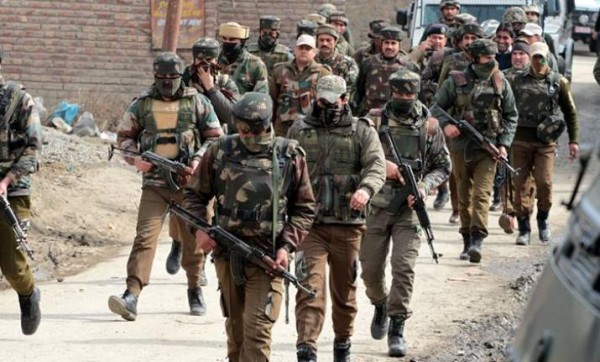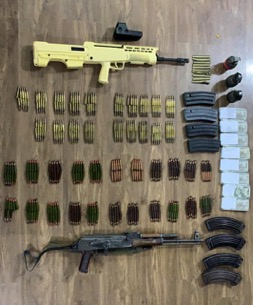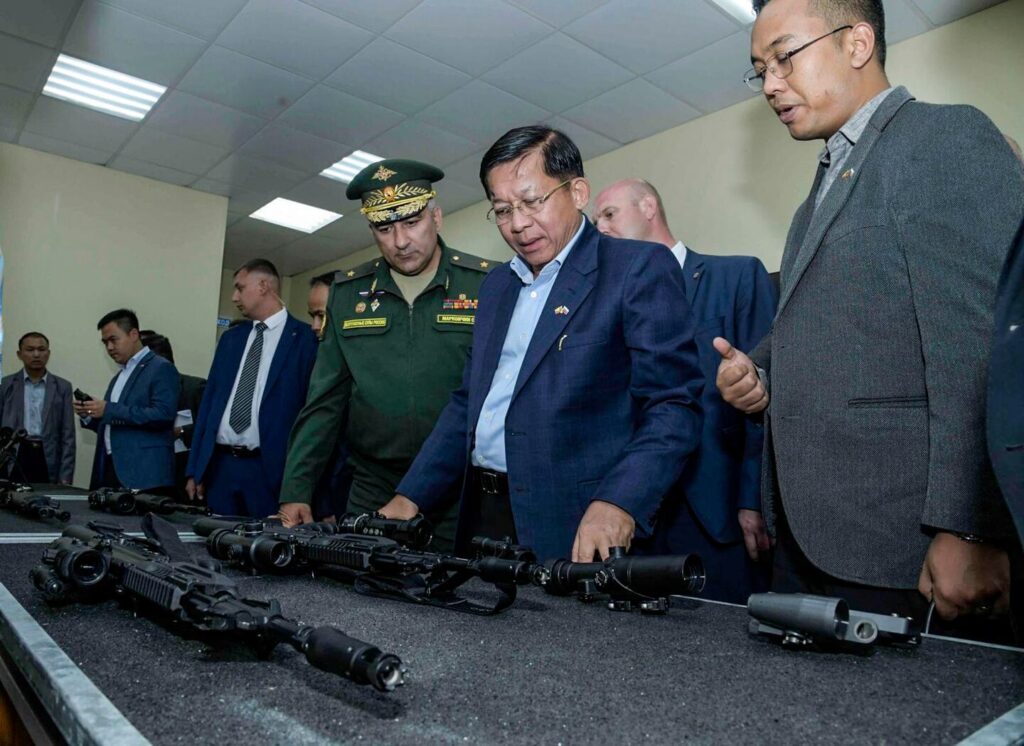MANTRAYA ANALYSIS#51: 16 NOVEMBER 2020
BIBHU PRASAD ROUTRAY
Abstract
Amid the Indian government’s continuing search for peace and stability in Kashmir, since the August 2019 decision to revoke Article 370 of the Indian constitution, security establishment in the union territory continue to face two primary challenges—home-grown militancy and militancy supported by Pakistan. Some successes have been achieved by reducing the number of active militants in the Kashmir valley and also the number of militant infiltrations from Pakistan. At the same time, local recruitment of militants continues. Peace will continue to elude the region in the coming months.

Introduction
Over 200 militants belonging to various militant groups have been killed in various security force operations this year in Jammu & Kashmir. 190 of them have been killed in the Kashmir valley and the rest in the Jammu region. The killed militants include chief of the Hizbul Mujahideen (HM), Saif-Ul-Islam Mir alias Doctor Saifullah alias Ghazi Haider (killed on 1 November) and Mir’s predecessor Riyaz Naikoo (killed on 6 May). Such persistent neutralization of terrorists, a key strategy of the security establishment to establish normalcy in the strife-torn region, have brought down the number of active militants in the valley. In the assessment of the Indian Army (IA)[1], there are 207 active militants in Kashmir at the moment, down from about 250[2] in the beginning of 2020. The Lashkar-e-Toiba (LeT) has 89 cadres, the HM has 56, the Jaish-e-Mohammad (JeM) has 52 and 10 are with the Al Badr[3].
Steady recruitment
Is Kashmir inching towards normalization through this policy of annihilation of militants remains an important question? Can the security forces hope to further reduce to the number of active terrorists, to below 100 by end of 2021? Such a scenario is unlikely.
Between 1 January and 15 October 2020, 131 local youths[4] have joined various terrorist outfits in Kashmir. This number could go up further.[5] In comparison, 117 youths had joined various groups in 2019, which was a sharp decline from 214 recruits in 2018. The only factor which has been preventing more youth from joining terrorism is a dearth of weapons, security agencies have speculated.
Such steady local recruitment, although by no means alarming compared to yesteryears, has three notable outcomes. First, it has kept the number of active militants of local origin greater than the Pakistani militants operating in Kashmir. In the beginning of 2020, out of 250 active militants, 102 were of Pakistani origin. Of the 207 active (as of October 2020), 90 are Pakistani nationals and the rest are locals. Secondly, such recruitment has reinforced the narrative that militancy fuelled by local alienation is a major cause of the ongoing conflict in Kashmir. And thirdly, such recruitment neutralises the efforts of the security forces who seem to have eliminated an average of ten militants per month in the first ten months of 2020.
Continuing Violence
The security force establishment insists, albeit justifiably, that the life span novice local militants ranges from few days to few months at the most. Lack of training and fancy for social media are among the causes why most of them are quickly neutralised. However, it is also a fact that the local militants, often operating in tandem with the Pakistanis, do inflict significant violence on civilians and security forces. Data reveals that in the first ten months of 2020, over 50 civilians have been killed, mostly by militants and some shot during the counter-terror operations by the security forces. The killed civilians include eight members of the Bharatiya Janata Party (BJP), which seems to have come under increasing attack by the militants trying to prove a point vis-à-vis New Delhi. In addition, at least 50 security forces too have been killed in various incidents of militant violence. The figure is lower than 2019 and 2018 when 83 and 91 security force personnel had been killed. Nevertheless, the capacity of the militants to inflict casualties continues to remain high.
Continuing Infiltration
Although for Pakistan, a ‘local’ rebellion in Kashmir reiterating a narrative of local alienation turning into a war against India is good news, the reduction of the number of Pakistani militants isn’t necessarily a welcome and acceptable trend. The ‘foreign’ militant is better trained, is capable of carrying out effective operations, has a longer shelf-life, and in comparison to the locals, is more willing to die for the ‘cause’. In addition, he is under firm control of his sponsor. His presence is further intended at assuaging the local Kashmiris that Pakistan has not abandoned them. However, maintaining a ratio in which the number of active Pakistani militants are more than the locals, is dependent on successful infiltrations from the terror launch pads in PoK. That capacity has come under some strain this year, available data reveals.
On 7 November, four security force personnel, including an Army officer, and three militants were killed during a failed infiltration bid by the militants along the LoC in Machil sector of Jammu and Kashmir. Again on 14 November, another infiltration attempt was foiled. The IA claims that success at pushing in more militants into Kashmir has deserted Pakistan, which according to reports, has pulled back at least 39 terror training camps from PoK into its hinterland, reducing the number of terror launchpads operating along the LoC to about 22[6].
In 2018, 143 militants infiltrated into Kashmir from across the LoC. Another 130 infiltrated in 2019. However, this year (till October), the IA estimates that only 30 have managed to do so. Additional intelligence reports indicate that another 18 militants may also have already reached south Kashmir. The IA ascribes the success to deployment of an additional brigade[7] just for the purpose of stopping infiltration, and use of technology and drones to monitor the movement along the LoC. According to a report quoting senior IA officials, the electronic surveillance has significantly improved along the LoC and ‘work on converting the existing border fence into a smart fence integrated with several sensors is under way’.
However, what could be limiting the IA’s capacity in establishing a zero infiltration regime include shelving of the smart fencing project along the Line of Control (LoC) due to prohibitive costs. In 2019, under a pilot project on 2.4 kilometres of smart fencing were erected on the LoC at the cost of Rupees 100 million. However, no further contract was assigned as the IA establishment found to the costs unaffordable for the700 kilometre-long LoC. Instead, a hybrid model integrated with LIDAR (Light Detection and Ranging) sensors, infrared sensors and cameras among others is being adopted. That would cost significantly less—Rupees one million per kilometre. By the end of 2020, the IA plans to bring 60 kilometres of the 700 kilometre-long LoC under this hybrid model.
Pakistan’s Twin Strategy

(Weapons including a Chinese EMEI Type 97 NSR rifle (in Yellow colour), grenades, ammunition
and Indian currency notes recovered by the Indian Army on 24 September 2020 in Qazigund, Anantnag district.
Photo Courtesy: Chinar Corps)
To deal with this what could possibly be a temporary loss of capacity to send more militants into Kashmir, Pakistan has resorted to two strategies. First, for over a year it has been looking for ways to deliver weapons to the militants in Kashmir through alternate routes and even using drones. Shortage of weapons with the militants is borne out by the fact that the security forces are recovering more pistols than assault rifles. In October, four AK-74 rifles were recovered from a tube across the Kishanganga River in Keran in Kupwara district. On a couple of occasions, EMEI Type 97 NSR rifles manufactured by Norinco company in China have been seized by the security forces along with Hexacopters built by from a Chinese firm associated with the China–Pakistan Economic Corridor (CPEC) project.[8]
Secondly, Pakistan could also be actively seeking to diversify militancy by extending support to new groups. Since August 2019, the birth of two proxy militant outfits have been reported. The Resistance Front (TRF) and the Tehreek-i-Milat-i-Islami (TMI), both proxies of the LeT, claimed responsibility for few attacks in the first two quarters of 2020. Since then, as a part of the same strategy, the defunct militant group Al Badr has been revived. Extinct since it’s not so active tenure in the late 1990s, the group has attracted 16 new recruits between July and August. In an encounter on 11 November, two militants – Irfan Ahmad Thoker from Kutpora and Umer Ahmad Lone from Naidgam Lone Mohallah were killed in Shopian in south Kashmir. Media reports[9] have even speculated that Al Badr could also be receiving assistance from China.
Future Trends
At one level, it can be argued that Kashmir hasn’t really imploded following New Delhi’s August 2019 decision to abrogate Article 370. However, it hasn’t stabilized either. Gains made thus far remain linked to the high concentration of security forces in the region and their pro-active operations. Pakistan hasn’t shown any willingness to stop supporting militancy in Kashmir.[10] The para-military Border Security Force assesses that about 300 trained militants are waiting in their launchpads in the PoK to intrude into Kashmir[11]. The winter months may put a temporary break on the infiltration attempts, providing some respite to the security forces. However, the attempts to deliver weapons to the active militants are likely to continue. The reported involvement of China in supporting militancy could add to the potency of militants. Further, attempts of the security forces to reduce the number of active militants would have minimal impact on the ground as long as local recruitment continues. In all likelihood, Kashmir will continue to stare at a bloody winter, impacting on New Delhi’s initiatives on improving governance and normalisation.
End Notes
[1] Zulfikar Majid, “Kashmir now past stage of uneasy calm, number of active militants reduced: Indian Army”, Deccan Herald, 26 October 2020, https://www.deccanherald.com/national/north-and-central/kashmir-now-past-stage-of-uneasy-calm-number-of-active-militants-reduced-indian-army-907165.html. Accessed on 8 November 2020.
[2] “160 terrorists killed in Jammu and Kashmir in 2019, but 102 Pakistan-origin ultras still active in state; overall decrease in terror incidents, say police”, Firstpost, 1 January 2020, https://www.firstpost.com/india/160-terrorists-killed-in-jammu-and-kashmir-in-2019-but-102-pakistan-origin-ultras-still-active-in-state-overall-decrease-in-terror-incidents-say-police-7847371.html. Accessed on 11 November 2020.
[3] Zulfikar Majid, “Kashmir now past stage of uneasy calm, number of active militants reduced: Indian Army”, op. cit.
[4] According to a study conducted by the IA ‘on the profile of terror recruitment in 2018, 30 per cent of the recruits were in the age group of 16-20 years while 60 per cent were in the age group of 21-25 years. Only 10 per cent of the recruits were in the age group of 26-30 years. In terms of education, the study showed that 20 per cent of the recruits were illiterate while 45 per cent had higher secondary schooling and 35 per cent were Matriculate. The study also looked at the financial background and showed that 60 per cent of the terrorists came from the middle class while 35 per cent came from the lower middle class. Only 5 per cent of the terrorists came from well-to-do families.’ Snehesh Alex Philip, “Terror recruitment in Kashmir ‘very high’, Al Badr active again as Pakistan revives outfit”, The Print, 14 October 2020, https://theprint.in/defence/terror-recruitment-in-kashmir-very-high-al-badr-active-again-as-pakistan-revives-outfit/523249/. Accessed on 13 November 2020.
[5] Ibid.
[6] Snehesh Alex Philip, “Use of tech, new security grid in Kashmir ‘substantially’ cut infiltration from Pakistan”, The Print, 19 October 2020, https://theprint.in/defence/use-of-tech-new-security-grid-in-kashmir-substantially-cut-infiltration-from-pakistan/526182/. Accessed on 11 November 2020.
[7] “Army Deploys Additional Brigade On LoC To Plug Infiltration From Pakistan”, Business World, 19 September 2020, http://www.businessworld.in/article/Army-deploys-additional-brigade-on-LoC-to-plug-infiltration-from-Pakistan/19-09-2020-322355/. Accessed on 16 November 2020.
[8] Chinar Corps, Indian Army Sources. https://twitter.com/ChinarcorpsIA/status/1309193914352455680/photo/1
[9] “Is China trying to revive a terrorist group in Pakistan occupied Kashmir?”, Wion News, 10 July 2020, https://www.wionews.com/world/is-china-trying-to-revive-a-terrorist-group-in-pakistan-occupied-kashmir-312371. Accessed on 11 November 2020.
[10] “Effectively Stopping Pak’s Infiltration, Smuggling Attempts At LoC: Army Chief”, NDTV, 15 October 2020, https://www.ndtv.com/india-news/effectively-stopping-pakistans-infiltration-smuggling-attempts-at-loc-army-chief-2310693. Accessed on 16 November 2020.
[11] M Saleem Pandit, “300 ultras ready to infiltrate from Pak launch pads: BSF”, Times of India, 16 November 2020, https://timesofindia.indiatimes.com/india/300-ultras-ready-to-infiltrate-from-pak-launch-pads-bsf/articleshow/79237429.cms. Accessed on 16 November 2020.
(Dr. Bibhu Prasad Routray is the Director of Mantraya. This analysis has been published under the ‘Mapping Terror & Insurgent Networks’ and ‘Fragility, Conflict and Peace Building’ projects. All Mantraya publications are peer-reviewed.)




